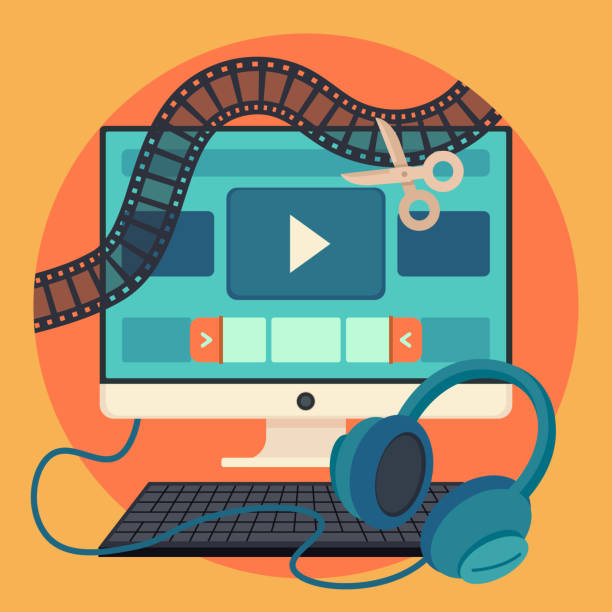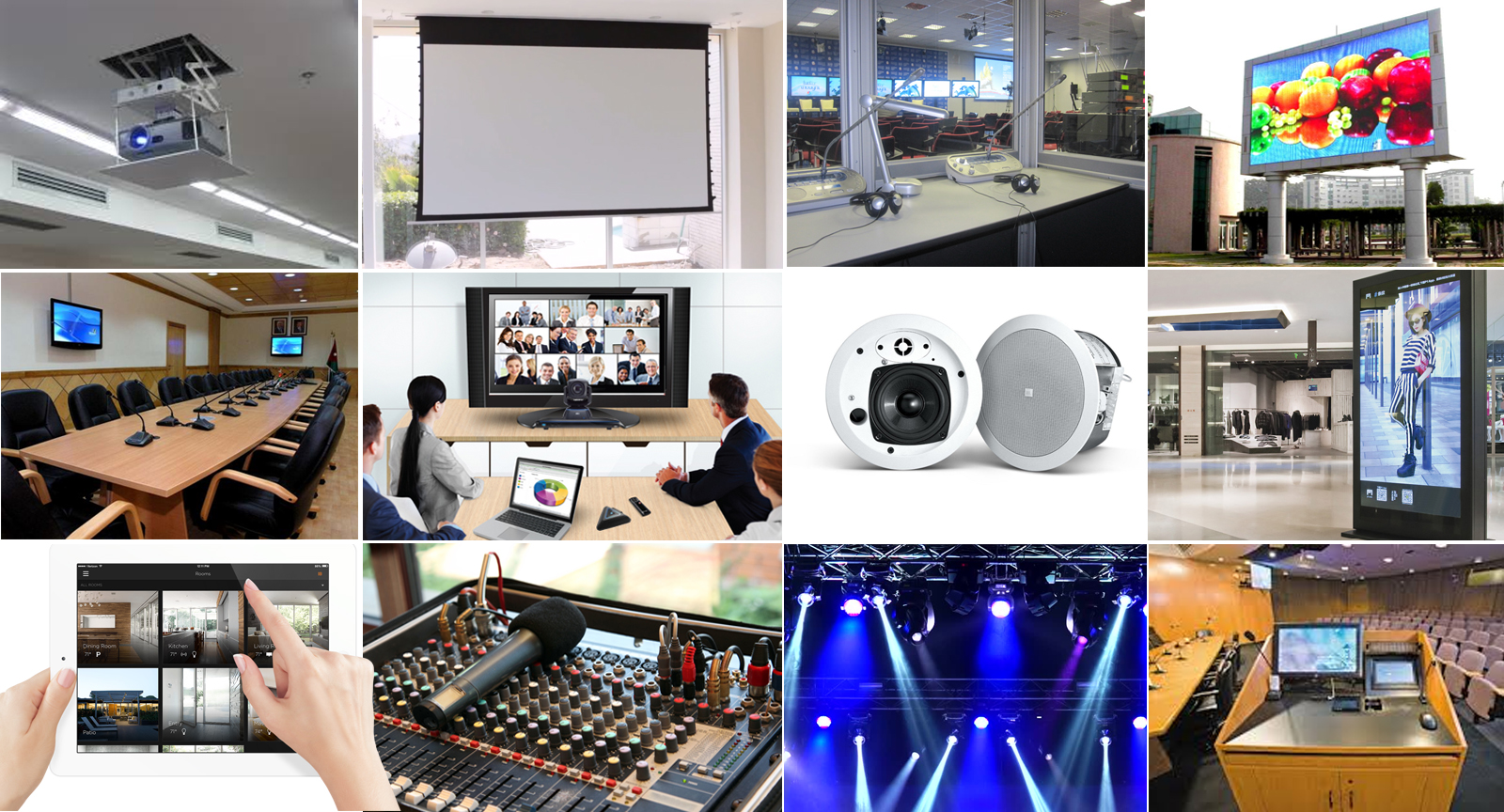How to schedule audio visual charlotte nc solutions effectively
Wiki Article
Recognizing the Addition of Audio Visual Innovation in Today's Educational Environments
The integration of audio-visual technology in educational setups has actually transformed the teaching and learning procedure. Educators currently have access to devices that accommodate different finding out styles, boosting student involvement and collaboration. The consolidation of these modern technologies provides both opportunities and obstacles. Comprehending how to efficiently execute these tools is essential. What strategies can educators use to take full advantage of the benefits of audio-visual innovation in their class?The Evolution of Audio-Visual Technology in Education
As educational needs progressed over the years, audio-visual technology underwent considerable makeovers that improved the knowing atmosphere. At first, devices such as movie projectors and slide programs were the key means of integrating visual aspects right into class. These early innovations provided teachers with the capability to existing info dynamically, yet they were restricted in availability and interactivity.With the arrival of video cassette recorders in the 1970s, classrooms started to incorporate documented lessons, widening the extent of educational resources. The intro of desktop computers in the 1980s further revolutionized this landscape, enabling the creation of multimedia presentations and interactive learning experiences.
The surge of the net in the 1990s noted a crucial minute, allowing real-time access to a wealth of audio-visual products. Today, digital devices such as interactive white boards and on-line understanding systems proceed to boost the instructional experience, fostering interaction and partnership amongst students.
Benefits of Audio-Visual Tools for Diverse Discovering Styles
Audio-visual devices play an important duty in satisfying varied understanding designs by boosting aesthetic discovering and improving auditory engagement. By incorporating images, videos, and sound, these technologies create a more inclusive educational atmosphere. This diverse method permits educators to deal with the diverse preferences and requirements of trainees successfully.Enhancing Visual Knowing
Interaction in the understanding process is significantly enhanced via making use of audio-visual tools, dealing with various learning styles. These devices, such as videos, infographics, and interactive presentations, give visual stimulations that aid understanding and retention. Aesthetic learners, in certain, benefit from the consolidation of photos and animations, which can streamline complicated principles and boost understanding. Additionally, audio-visual sources can show real-world applications, making learning a lot more pertinent and engaging. By integrating shade, activity, and audio, instructors can create a dynamic discovering setting that captures pupils' interest and cultivates deeper cognitive links. Ultimately, the critical use audio-visual innovation not only supports aesthetic learning but likewise enhances the overall instructional experience for diverse learners.Improving Auditory Engagement
A considerable benefit of incorporating audio-visual tools in education and learning is their ability to improve auditory involvement among pupils. These tools, which include multimedia discussions, podcasts, and interactive audio components, deal with various discovering designs, specifically profiting auditory learners (audio visual charlotte nc). By integrating sound and narration, teachers can create immersive experiences that capture trainees' attention and strengthen understanding. This engagement is vital, as it fosters a deeper understanding of the material and advertises retention. In addition, audio-visual devices can facilitate joint discovering environments, motivating trainees to take part in conversations and share their insights. Ultimately, the consolidation of audio-visual technology not only supports auditory involvement yet additionally improves the overall educational experience, making discovering more vibrant and efficient for all pupilsEnhancing Engagement Through Interactive Knowing

Furthermore, gamification aspects, such as quizzes and simulations, can boost motivation and retention, making discovering more delightful and effective. These strategies not just promote cognitive engagement but likewise satisfy varied discovering designs, making certain that all trainees can take part meaningfully. As an outcome, interactive discovering environments promote a feeling of community and belonging, ultimately bring about improved academic end results. Through the integration of audio visual modern technology, instructors can change traditional classrooms into lively spaces where trainees prosper and proactively form their instructional trips.
Linking Theory and Technique With Multimedia Resources
Multimedia resources work as a vital web link in between theoretical concepts and useful application in academic settings. By improving interaction, promoting collaborative learning experiences, and sustaining diverse discovering styles, these tools create an extra comprehensive and dynamic knowing environment - audio visual charlotte nc. This method not just promotes much deeper understanding however likewise prepares trainees for real-world difficulties
Enhancing Engagement Through Multimedia
Engagement in instructional setups substantially enhances when instructors incorporate multimedia sources into their teaching strategies. Making use of videos, podcasts, and interactive discussions boosts the finding out experience, allowing pupils to get in touch with the material on multiple degrees. Multimedia sources deal with various discovering designs, supplying visual, acoustic, and kinesthetic stimulations that can hold trainees' attention better than conventional lecture methods. In addition, these resources can simplify intricate concepts, making them more available and memorable. By incorporating multimedia, teachers can develop a dynamic classroom setting that cultivates inquisitiveness and encourages students. Ultimately, the tactical use audio-visual technology offers to link the space in between theoretical understanding and practical application, enriching the academic experience for both trainers and students.Facilitating Collaborative Understanding Experiences
Countless researches suggest that collaborative understanding experiences significantly enhance trainee end results when integrated with multimedia resources. Multimedia tools help with interaction amongst pupils, allowing them to take part in analytic and vital assuming collectively. By using video clip conferencing, joint systems, and interactive presentations, teachers develop settings for synergy and shared learning. These technologies allow trainees to connect their ideas successfully and obtain immediate comments, cultivating a much deeper understanding of the subject. Furthermore, multimedia sources can offer complex concepts in more digestible styles, promoting discussion and partnership. Therefore, the combination of collaborative discovering and audio-visual modern technology not only improves the instructional experience yet likewise prepares pupils for real-world synergy characteristics, stressing the value of participation and cumulative expertise building and construction.Supporting Diverse Understanding Styles
While typical training techniques usually satisfy a minimal variety of discovering choices, the assimilation of audio-visual technology provides a more inclusive strategy to education and learning. By utilizing multimedia resources such as videos, interactive simulations, and digital discussions, instructors can attend to various learning designs, including visual, auditory, and kinesthetic. This adaptability permits set apart direction, making it possible for trainees to involve with content in manner ins which resonate with their specific choices. Furthermore, audio-visual devices can facilitate deeper understanding by supplying numerous depictions of complicated principles. As a result, pupils who might fight with conventional approaches can find alternate paths to success, fostering a much more fair understanding setting that supports scholastic achievement for all learners.Obstacles in Executing Audio-Visual Modern Technology
Although audio-visual innovation holds fantastic pledge for improving educational experiences, its application usually experiences substantial challenges. One main concern is the monetary problem connected with getting and maintaining such devices, which can strain spending plans, particularly in underfunded organizations. Furthermore, insufficient training for instructors can impede efficient combination, leaving them ill-prepared to utilize the innovation completely. Technical issues, such as software application malfunctions and compatibility problems, might additionally interfere with lessons and annoy both instructors and pupils. Differing degrees of trainee access to technology outside the classroom can create variations in learning chances. Lastly, the capacity for over-reliance on innovation might interfere with vital training approaches, ultimately limiting the educational experience. Addressing these obstacles calls for a thorough technique, including ample financing, specialist development, and equitable accessibility to sources, to guarantee that audio-visual innovation can be leveraged properly in today's instructional settings.Ideal Practices for Integrating Technology in the Classroom

Furthermore, cultivating an interactive environment through joint devices urges student involvement and engagement. Utilizing diverse audio-visual sources caters to various learning designs, fitting visual, acoustic, and kinesthetic students. Routinely evaluating the effect of technology on trainee discovering aids teachers fine-tune their techniques and adapt to altering needs. Including trainees in the selection of innovation advertises ownership and motivation. By adhering to these ideal techniques, instructors can produce a dynamic classroom ambience that properly incorporates innovation and enhances the educational experience for all pupils.
The Future of Audio-Visual Innovation in Education
As class significantly accept technology, the landscape of audio-visual devices in education proceeds to evolve (audio visual charlotte nc). Future developments are expected to concentrate on higher interactivity and personalization, enabling teachers to tailor discovering experiences to individual student demands. Advancements such as augmented fact (AR) and digital reality (VR) will likely give immersive understanding atmospheres, enhancing trainee engagement and understanding
In addition, expert system (AI) is poised to play a considerable function in audio-visual innovation by offering real-time comments and flexible knowing paths. This assimilation may aid educators determine and attend to student difficulties more successfully. Cloud-based systems will certainly facilitate simpler accessibility to sources and collaboration among trainees and educators, despite location.
In addition to these technological breakthroughs, specialist growth for educators will be vital, ensuring they are outfitted to use these devices properly. On the whole, the future of audio-visual modern technology in education guarantees to produce more dynamic, inclusive, and impactful discovering experiences.
Frequently Asked Questions
How Can Teachers Choose the Right Audio-Visual Tools for Their Classrooms?
Choosing appropriate audio-visual tools requires teachers to assess their academic goals, consider student needs, review offered modern technology, and look for suggestions from peers or experts, making sure tools properly boost discovering and interaction within their details class atmosphere.What Budget plan Considerations Are There for Implementing Audio-Visual Technology?
Spending plan considerations for implementing audio-visual technology click here include first acquisition expenses, upkeep expenses, training for staff, and possible software licensing fees. Additionally, long-lasting financial investment in updates and replacements ought to also be factored right into economic planning.Are There Certain Training Resources for Educators on Audio-Visual Equipment?
Many institutions provide training resources for instructors on audio-visual tools, consisting of online programs, workshops, and instructional guides. These sources aim to boost teachers' abilities and confidence in properly integrating modern technology into their training practices.Just how Do We Measure the Effectiveness of Audio-Visual Technology in Learning?
Gauging the efficiency of audio-visual modern technology in discovering involves examining pupil interaction, understanding, retention prices, and overall scholastic efficiency. Surveys, evaluations, and observational researches can offer valuable understandings right into its influence on academic results.What Are Usual False Impressions About Audio-Visual Innovation in Education And Learning?
Common mistaken beliefs concerning audio-visual innovation in education and learning consist of the idea that it guarantees engagement and discovering end results, as well as the assumption that all trainees profit just as, forgeting specific knowing preferences and requirements.Report this wiki page